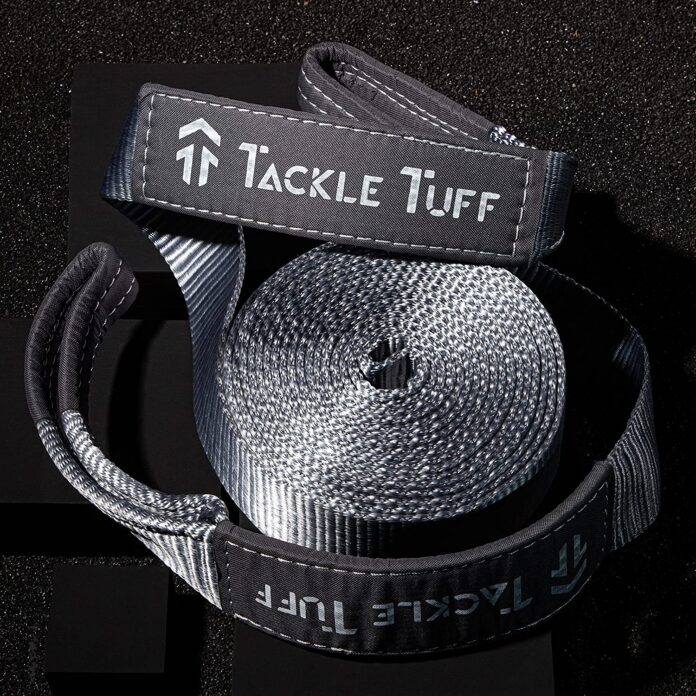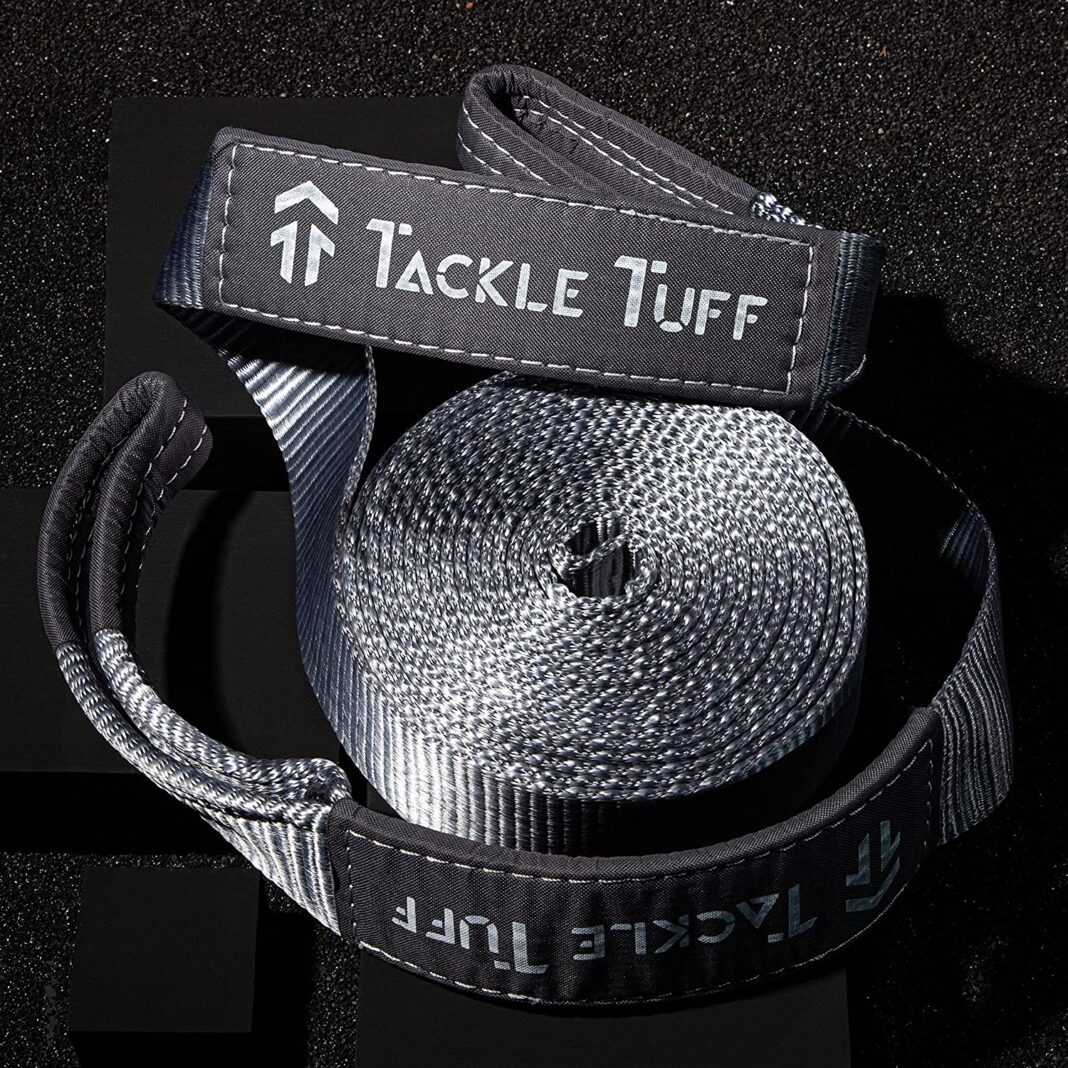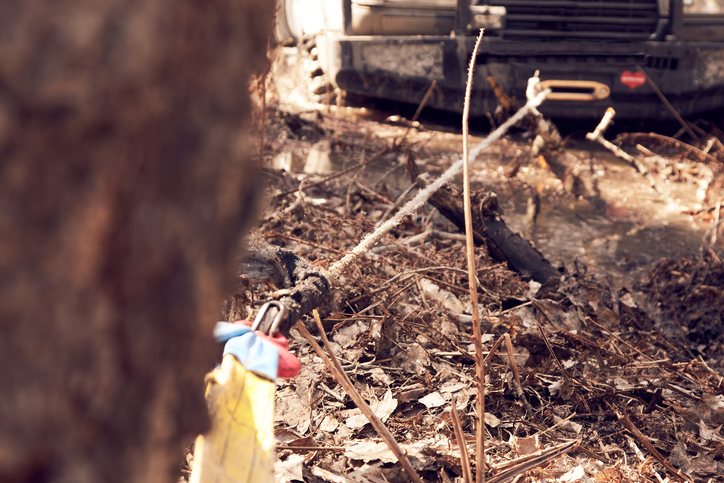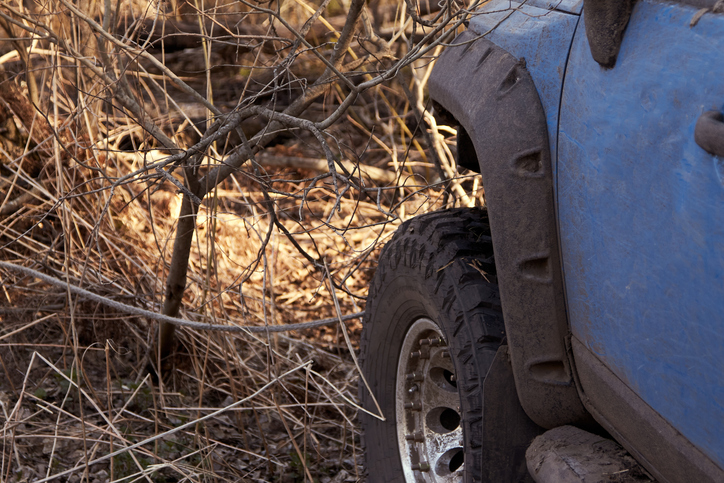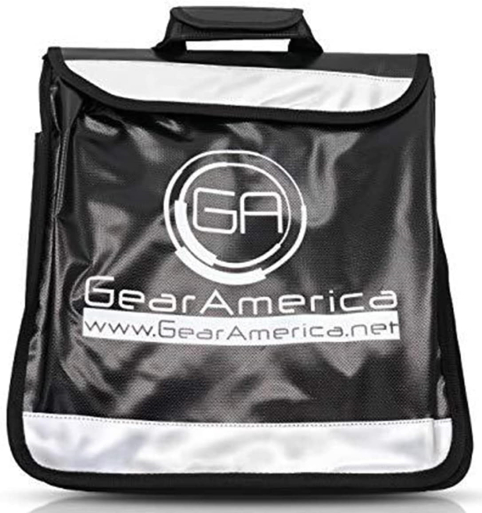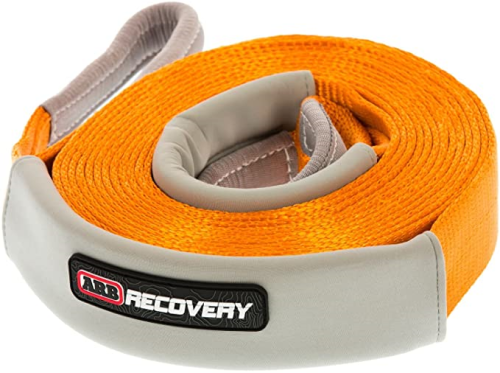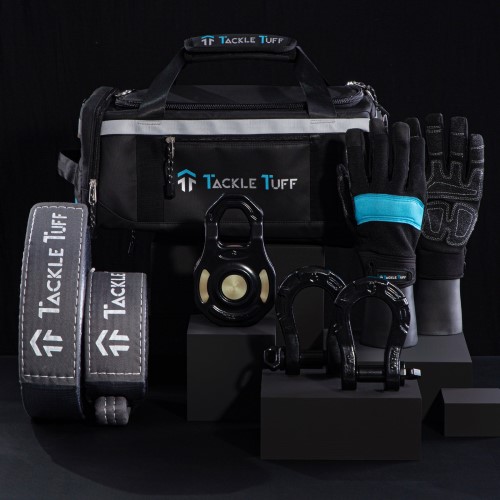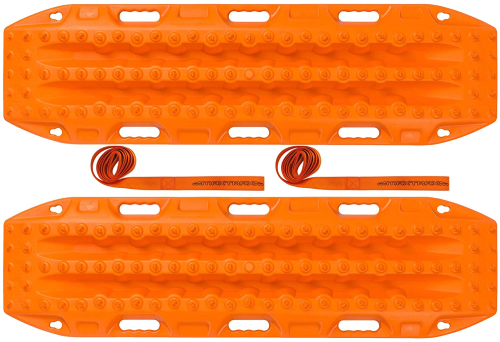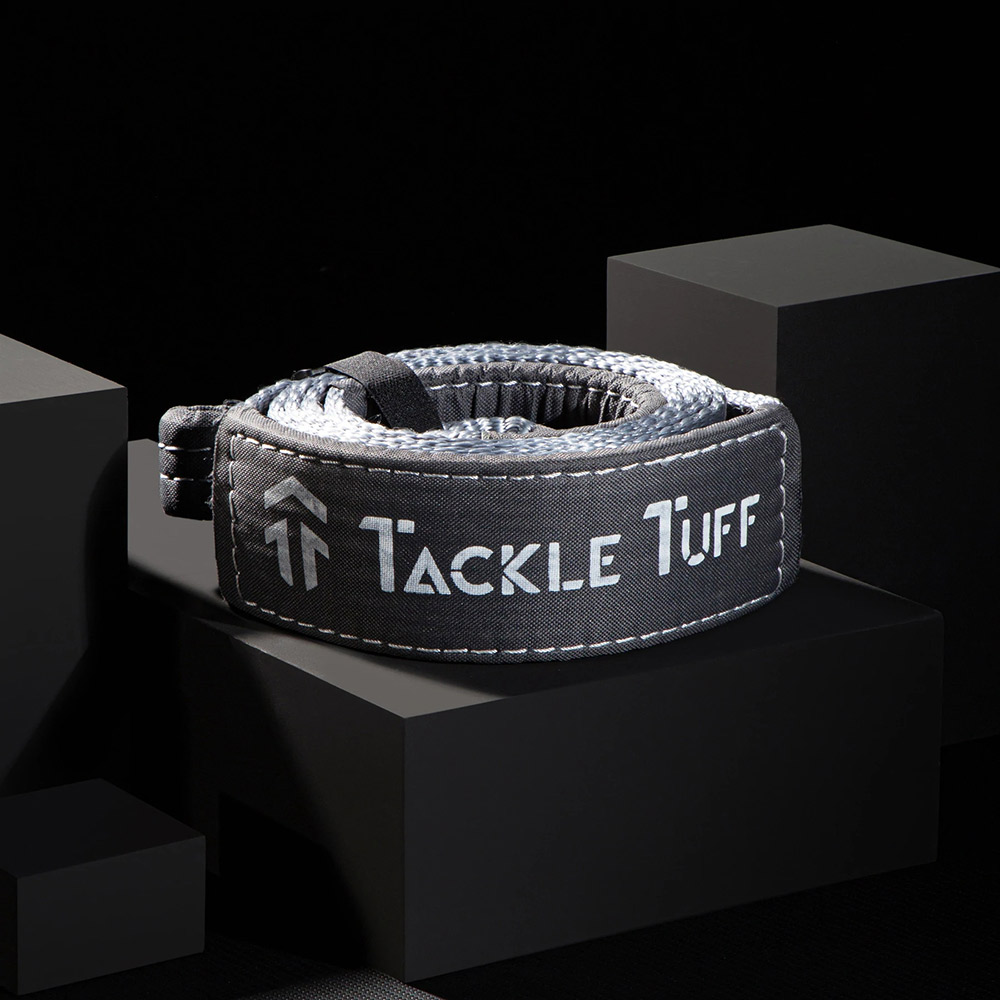Image Credit: Amazon
Off-road recovery gear can get you out of some sticky situations. You just need to know how to use it correctly.
Today, we’ll cover how to use tree saver straps and some other common recovery gear.
With these tips in mind, you’ll be able to get out of most situations.
Table of Contents
- Why Use Tree Saver Straps?
- How to Use Tree Saver Straps
- How to Use a Winch Line Dampener
- Why Use Tree Saver Straps?
- How to Use Snatch straps
- How to Use Traction Boards
- Final Thoughts
- Other Recommended Recovery Gear
Why Use Tree Saver Straps?
Photo by Aleksandr Zyablitskiy via iStock
The most common anchor for a winch pull is a tree. To secure a winch line on a tree, one needs to wrap a strap around it and connect the winch line hook onto the ends of the strap.
These kinds of straps are known as the tree saver straps.
As the name suggests, tree saver straps are there to protect the tree’s bark from the winch line.
In newer winches with a synthetic cable, they also protect the capable itself as it can fray if it rubs against a tree.
How to Use Tree Saver Straps
Photo by Aleksandr Zyablitskiy via iStock
Tree saver straps are thick straps designed not to stretch, so they can be effectively used as an extension to your recovery.
Using tree saver straps is simple. You simply wrap it around the base of a tree and connect both ends to a bow or soft shackle. Then connect your winch rope to that, and you are good to go.
Keep in mind that because tree saver straps don’t stretch, they can be useful in other instances as well. For example, if you need to tow another vehicle. Also, you can use these straps as a winch extension.
Always remember that tree saver straps cannot be used for a snatch recovery as their resistance to stretch will lead to a jarring pull that can break recovery points. Furthermore, due to the lack of kinetic energy, the recovery will not be as efficient.
You can see how the process of using tree saver straps unfolds in the video above by ARB4X4.
How to Use a Winch Line Dampener
Image Credit: Amazon
Winching is perhaps the most efficient way to recover a vehicle; however, due to the forces involved, it is also one of the most dangerous.
The main problem here is that if a winch line fails, the released energy can send the hook back to your vehicle, which can damage body panels or even injure the driver as it has the potential to smash through a window
To prevent this, we use winch line dampeners. These are designed to pull the line to the ground in case of a failure.
Using a winch line dampener is easy. You simply hook up your winch recovery as you normally would and then use the Velcro to attach the dampener near the hook end of the line.
By doing this, you ensure the heaviest part of the recovery will be sent to the ground in the event of a failure.
Above is a video explaining how to use a winch line dampener by Offroad Addiction TV.
How to Use Snatch straps
A snatch strap is perhaps the simplest recovery item to use. However, there are a few key points you need to consider.
First, make sure the strap you are using is a snatch strap and not a tow strap. Tow straps do not stretch; therefore, do not work well for recoveries for the reasons mentioned in the beginning.
What you need here is a strap that will recoil as it dampens the forces while also making the recovery more effective.
In addition to the correct strap, you will need rated recovery points and a winch damper that will serve the same purpose as it does on a winch line. In most vehicles – and especially older – ones the factory hooks are there to tie down the truck on a tow trailer or for gentle towing in case of a breakdown.
If you attempt to perform an off-road recovery from those hooks, they will probably break.
The same is true for normal tow balls.
So, before you head out off-roading, make sure you have installed some rated recovery points.
After all the above have been addressed, a snatch recovery is performed simply by connecting the ends of the snatch strap to each vehicle. The vehicle that is free will snatch the one that is stuck, and the recovery is over.
For safety, make sure you stand far away from the live recovery as there is always a possibility of equipment failure.
Above is a video example on how to perform a snatch recovery by Rohny Dahl.
Of course, it’s important to note that all of this gear – tree saver straps, winch line dampeners, and snatch straps – don’t have to be purchased separately.
I recently picked up a recovery kit from Tackle Tough that includes all these elements and many other off-roading necessities.
As you can see above, this recovery kit also includes a snatch block and D-ring shackles. The gear is stored in a bag that doubles as a dampener bag. Kevlar gloves are even included!
Fortunately, I’ve only had to use my recovery kit once. But I’m glad I had the kit with me to get myself out of a sticky situation (with the help of some buddies, of course).
Having all this recovery gear in a kit in a single bag helps me keep track of my gear and stay organized. After all, the last thing you want is to be searching around for gear to start a recovery!
How to Use Traction Boards
Traction boards are an inexpensive and effective addition to your recovery gear. Using them is simple and safe.
When you get bogged in deep mud, snow, or sand, do some digging towards the direction you will be driving out and wedge the traction boards between your tires and the ground.
You then get in your car, apply throttle, and the tires will climb onto the traction boards and out of the area you were stuck in.
Keep in mind that good quality traction boards can also be used as a small bridge over deep ruts. You can also place them on slippery hills before driving up to aid with traction during your ascent.
Above is a video example on how to use traction boards by 4×4 Australia.
Final Thoughts
Tree saver straps and other recovery gear are essential items to carry in every 4wd. Having fun is what it’s all about and getting stuck in the middle of the woods without a possible recovery option isn’t fun.
If you have any further questions regarding tree saver straps or for anything else off road or overland related, head over to the forum section of our page.



